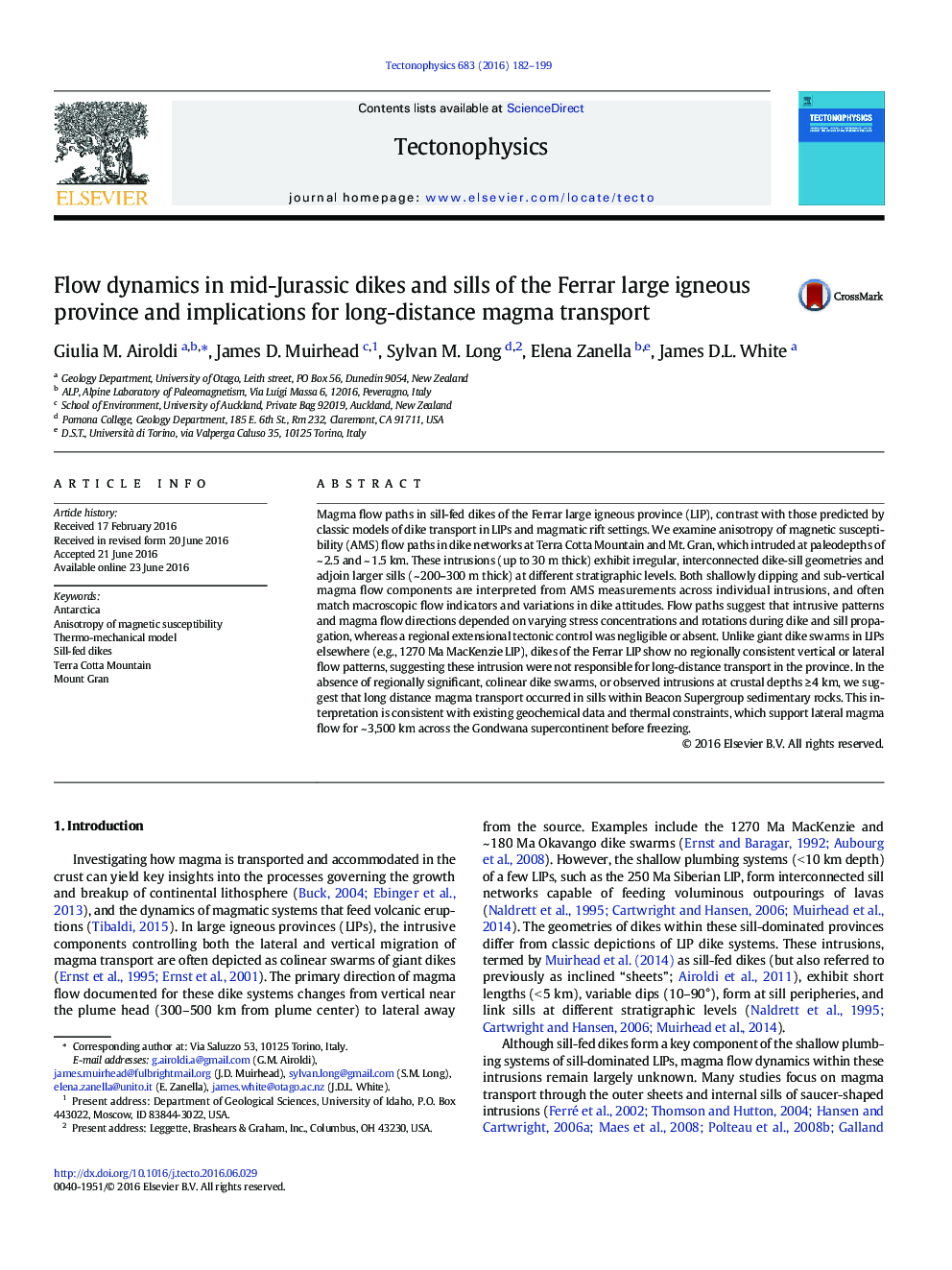| کد مقاله | کد نشریه | سال انتشار | مقاله انگلیسی | نسخه تمام متن |
|---|---|---|---|---|
| 6433376 | 1636715 | 2016 | 18 صفحه PDF | دانلود رایگان |

- Ferrar intrusions contrast with classic models for LIPs and magmatic rift settings.
- Crack growth and magma flow in south Victoria Land dike networks were sill-driven.
- Emplacement of the Ferrar LIP was not assisted by regional extensional tectonics.
- Magma travelled in sills within Beacon rocks for ~Â 3500Â km across Gondwana.
Magma flow paths in sill-fed dikes of the Ferrar large igneous province (LIP), contrast with those predicted by classic models of dike transport in LIPs and magmatic rift settings. We examine anisotropy of magnetic susceptibility (AMS) flow paths in dike networks at Terra Cotta Mountain and Mt. Gran, which intruded at paleodepths of ~ 2.5 and ~ 1.5 km. These intrusions (up to 30 m thick) exhibit irregular, interconnected dike-sill geometries and adjoin larger sills (~ 200-300 m thick) at different stratigraphic levels. Both shallowly dipping and sub-vertical magma flow components are interpreted from AMS measurements across individual intrusions, and often match macroscopic flow indicators and variations in dike attitudes. Flow paths suggest that intrusive patterns and magma flow directions depended on varying stress concentrations and rotations during dike and sill propagation, whereas a regional extensional tectonic control was negligible or absent. Unlike giant dike swarms in LIPs elsewhere (e.g., 1270 Ma MacKenzie LIP), dikes of the Ferrar LIP show no regionally consistent vertical or lateral flow patterns, suggesting these intrusion were not responsible for long-distance transport in the province. In the absence of regionally significant, colinear dike swarms, or observed intrusions at crustal depths â¥Â 4 km, we suggest that long distance magma transport occurred in sills within Beacon Supergroup sedimentary rocks. This interpretation is consistent with existing geochemical data and thermal constraints, which support lateral magma flow for ~ 3,500 km across the Gondwana supercontinent before freezing.
412
Journal: Tectonophysics - Volume 683, 30 June 2016, Pages 182-199